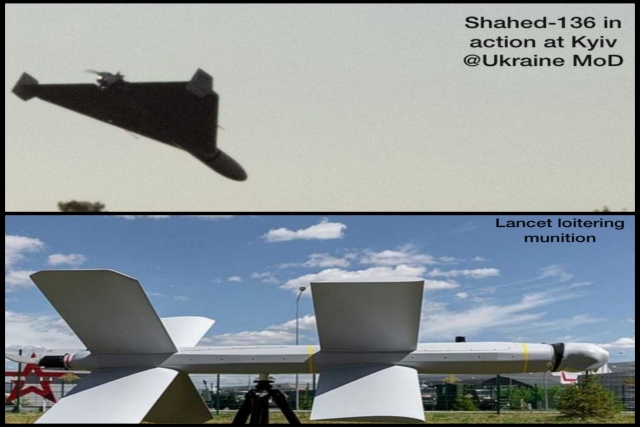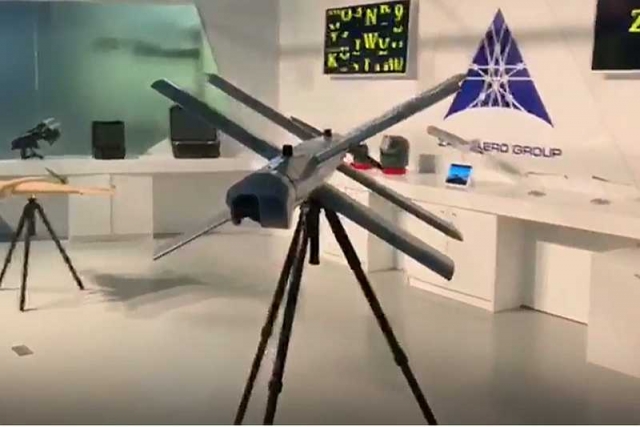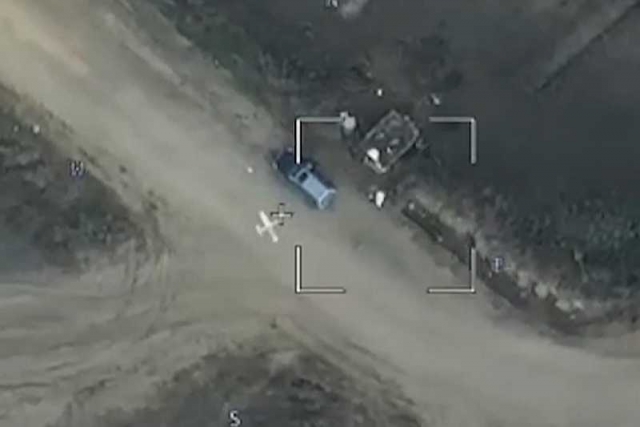Parte de la destrucción causada por los recientes ataques en ciudades de Ucrania, se debe al empleo de los sistemas LANCET-LM de fabricación rusa. Se trata de Loitering Munitions (LM) o “drones kamikaze” fabricados por la empresa ZARA Aero, productora de drones y subsidiaria del holding Kalashnikov Concern. A diferencia del SHAHED-136 de origen iraní, también empleado en los ataques citados, el LANCET tiene una estructura similar a un pequeño misil, con su cuerpo cilíndrico y planos de sustentación con un diseño aerodinámico tipo “doble X”. Con propulsión eléctrica y una pequeña carga explosiva de 3 / 5 kg y una muy reducida “firma radar”, puede mantenerse sobrevolando a gran altura, y una vez adquirido su blanco, lanzarse en picada a gran velocidad, lo cual lo hace muy difícil de neutralizar.
The destruction caused by kamikaze drone attacks in Kyiv over the past few days are caused by Russian-made ‘Lancet’ Loitering munition, also known as Flying Kalashnikov, along with Iranian Shahed-136 attack drones.
Revelations by the Russian Ministry of Defense (MoD) points to the extensive use of the ‘Lancet’ loitering munitons by ZALA Aero, a Russian drone maker which is now a subsidiary of Kalashnikov Concern.
“The Russian Ministry of Defense has published the first video that allows a detailed look at the use of modernized loitering ammunition ‘Lancet’ in the zone of the special military operation in Ukraine. On the footage, the UAV hits an SUV, near which there were Ukrainian militants,” said a report in the Russian MoD’s TV Channel.
The ‘Lancet’ is a kamikaze drone with a ‘double X’ aerodynamic design. It allows you dive at very high speeds, while maintaining a large payload, and to develop a very good speed, the report said.

The Russian MoD published footage of the destruction of Ukrainian military equipment by high-precision strike drones of the Airborne Forces in the Nikolaev-Krivoy Rog region.
As a result of the use of drones, several enemy tanks were destroyed, as well as self-propelled artillery mounts and enemy wheeled vehicles, it added.
Compared to the Shahed-136, the Lancet drones can loiter at a higher altitude and dive at a very high speed giving defensive forces a shorter window of opportunity to react and shoot down the drone.
The ‘Lancet’ loitering munition is shaped like a missile unlike the Shahed -136 that resembles a mini-aircraft. The optical seeker is embedded in the nose rather than on its underbelly to reduce drag and leave a smaller radar signature. The two sets of X Plane wings- two at the mid-point and two at the far end, allow greater stability in the air. The propulsion system is all-electric with a two-bladed propeller at the rear.
Click here to read more about Shahed-136 UAVs.

Made of plastic and composite materials and about the size of a small air-to-air missile, it is “invisible” to traditional air defense radars.
The ‘Lancet’ is produced in various versions, with an operational range of up to 40 km and a speed of 80-110 km/h. The Lancet can carry a payload of up to 3 kg, with a maximum gross take-off weight of 5 kg (Lancet-1) and 12 kg (Lancet-3).
According to ZALA Aero’s website, the drone requires no land or satellite based navigation. The UAV also transmits video, to confirm target before engagement. The Lancet’s built-in anti-laser protection protects against laser weapons, while its electric engine facilitates its stealth capabilities.
Due to its better-than-expected performance in Syria, the ‘Lancet’ has been dubbed as the “flying Kalashnikov.”
Fuente: https://www.defensemirror.com


